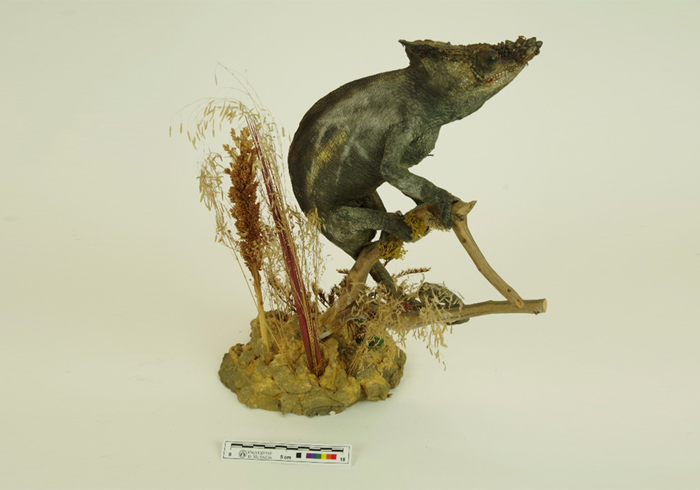This species of chameleon was first described as Camaleonis rariss in 1768 by James Parsons. However, it was not until 1824, more than fifty years later, when the French biologist George Cuvier gave its actual name, Calumma parsonii in honor of its first describer, James Parsons.

Like the others chameleons, it belongs to the Chamaeleonidae family. Within this family of reptiles, the Calumma genus is a group of species endemic from Madagascar. Among these species, Calumma parsonii is one of the largest species with some males reaching 80 centimeters in length. This data is striking if one takes into account that the Calumma genus also includes the smallest of the "true" chameleons, Calumma nasuta, which barely reaches 10 centimeters in length.
Calumma parsonii or Parson's Chameleon is characterized by the large bony cap that it presents in the cephalic and rostral region. Within this species we also find two subspecies that we can easily distinguish by observing their anatomy. The first one, Calumma parsonii, is larger in both size and population. The second one, Calumma parsonii cristifer, differs by having a smaller size, dorsal crest and, most striking of all, by having orange eyelids.
Finally, regarding the status of this species, its main threats have been the destruction of the tropical forests it inhabits and its export and handling as an exotic pet. Fortunately, different legal measures have been taken to curb these threats, especially those related to petism. Even so, it is currently classified as a "Near Threatened" species by the IUCN and, therefore, we must continue to be especially careful if we want to continue enjoying a species like Calumma parsonii in the future.

















